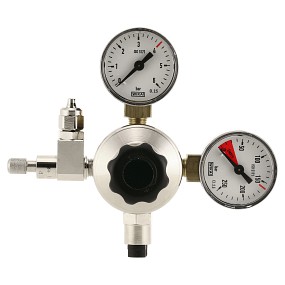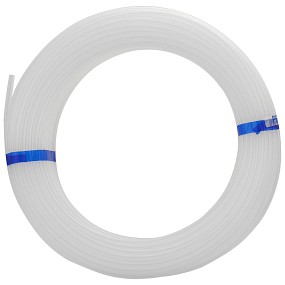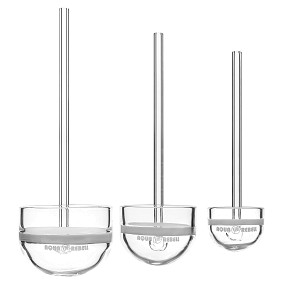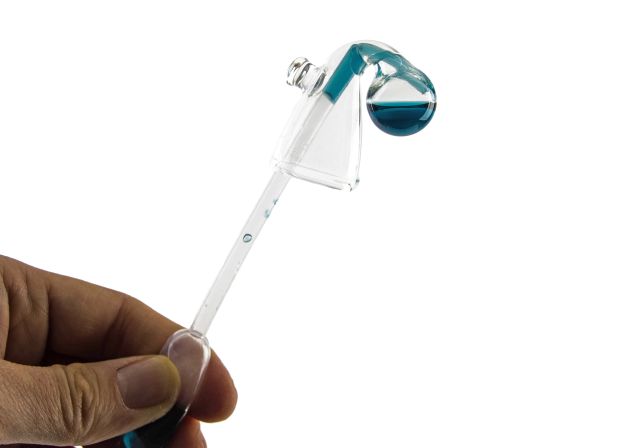In the following video tutorial, Oliver Knott explains the assembly of a refillable CO2 system for an aquarium. He explains the individual components and gives numerous tips and tricks. A supply with CO2 is essential for the healthy growth of aquatic plants: Carbon is an important nutrient, often only insuffiently available in regular aquariums.
Bottle
The main component of such a refillable system is of course a CO2 bottle. These are available in different sizes. Make sure that the bottle can be stored well in the base cabinet. In general, it is advisable to go for a larger bottle. A small bottle connected to a very large aquarium will empty very quickly and you will be forced to refill it often - this can get very annoying!
Pressure reducer

The pressure reducer serves the purpose of gauging the high pressure inside the bottle and reducing it to a level enabling a preferably fine and precise dosing of the gas for the introduction into the aquarium. Oliver Knott is using the Oxyturbo pressure reducer, which has a very delicately adjustable needle valve. Two pressure gauges indicate the pressure in the bottle and the working pressure.
Solenoid valve
Using a small end of pressure-resistant hose Oliver Knott then connects a solenoid valve to the CO2 system. This serves as a night shut-off, so a carbon fertilization will only happen during the day - the plants don’t need CO2 at night, because there is no photosynthesis without light. The solenoid valve is equipped with an earthed socket. Optimally the valve and lighting should be controlled via timer. Incidentally: pressure reducers with integrated solenoid valves are available as well (e.G.: this one) - with it, you can scrap one hose line.
Check valve
A short distance directly after the solenoid valve, a check valve is installed into the hose-line. A check valve prevents water from flowing back into the technical components, causing damage. Backflow can happen e.G. at a loss of pressure or if the solenoid valve is closed at night.
CO2 hose

CO2 hoses are available in many different versions and materials. Pressure-resistant but rather stiff high-pressure hoses serve the purpose of connecting technical components like pressure reducer, night shut-offs and check valves. Softer tubes made of silicone are more suitable for the connection of glass wares like diffusers and bubble counters.
For clever and visually appealing hose routing over the edge of the aquarium tank, U-pipes or J-pipes made of glass or stainless steel can be used. This prevents kinks in the hoses. In the video, Oliver Knott uses a U-pipe made of glass.
Bubble counter
To monitor the amount of gas introduced into the aquarium, a bubble counter is integrated into the hoseline. With this tool it is possible to measure the amount of infused CO2. The value is usually stated in bubbles per minute or bubbles per second. A bubble counter can be fixed to the outside of a side pane of the tank, so you can always keep an eye on the amount of bubbles. In the video, Oliver Knott uses a Dici aluminium bubble counter. This bubble counter sports an additional check valve.
CO2 addition

So-called diffusers are especially efficient for the introduction of CO2 into an aquarium. In the video, Oliver Knott uses the Aqua Rebell CO2 Diffusor small. The gas is pressed through a fine-pored ceramic membrane and atomized into the smallest micro bubbles. The minute bubble size makes sure, that the CO2 can dissolve very well in the aquarium water. An appropriately high working pressure is necessary for such a diffuser, which can be dialled in directly at the pressure reducer. High-volume aquariums call for correspondingly bigger diffusers. To cover this as well, Oliver presents some more Aqua Rebell bowl diffusers. The article "Choosing the right CO2 diffuser" contains a small overview of which diffusers are suitable for which tank size.
CO2 drop checker
To monitor the CO2 content, it is sensible to use a drop checker. In his aquarium, Oliver Knott uses an Aquasabi Orb Checker. An orb checker is usually made of glass and is filled with a testing agent. The video shows the Aqua Rebell CO2 Check 250 ml testing agent as an example. By colour change, the product indicates whether the amount of CO2 is too high, too low or just right. We have covered this topic in our articlel "Measuring the CO2-level" in more detail. How to load a drop checker, can be learned from this handy guide.

By the way: the construction of a CO2 system is described in more detail in our article "Refillable CO2 injection system" from our aquascaping Wiki.